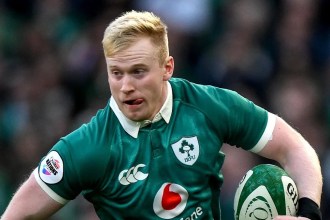The University of Oklahoma (OU) has recently announced a 3% tuition increase for the fifth consecutive year. This decision, which has sparked discussions on the evolving landscape of university funding, has become a focal point in the ongoing debate around student costs and the allocation of resources within higher education.
State Representative Forrest Bennett (D-Oklahoma City) encapsulates the situation, stating that this tuition hike is “a sign of the times.” He argues that the persistent rise in tuition rates results from a long-term decline in state funding for higher education. By 2000, state appropriations made up about 40% of OU’s budget; projections suggest this will drop to a mere 22% by 2025. As a consequence, universities like OU are compelled to seek alternative funding sources—primarily through tuition and private donations.
Bennett raises an essential question: “If we are not funding the university to the degree that we should be, then should the state really get to dictate terms to a university that’s having to raise all its revenue from either tuition or private donors?” This inquiry taps into a larger discussion about state responsibility for funding higher education and the implications for students.
In light of the tuition increase, OU President Joseph Harroz emphasized that the additional revenue will be funneled into scholarships and programs aimed at increasing access for underserved communities. Bennett cautiously supports this direction, stating, “I would rather see a modest increase in order for low-income folks to access higher education than see the university roll back opportunities.”
Critics are concerned about the optics of a tuition hike coinciding with the announcement of OU’s $20.5 million Name, Image, and Likeness (NIL) revenue-sharing program for student-athletes, which includes six sports. This initiative, designed to compensate athletes for their contributions, has been positively received by some, including Bennett, who applauded the inclusion of a variety of sports in the plan, stating, “I was really happy to see that the University of Oklahoma chose to do revenue sharing across six sports, not just football.”
This development is timely; it marks an important shift in how college athletics and athlete compensation are viewed. Bennett advocates for a legislative response to the NIL landscape, emphasizing the need for athlete voices to be central to the conversation. He reflects on the disparities faced by college athletes, suggesting that “getting free tuition alone is not proper compensation for college athletes,” particularly when many struggle to afford basic necessities like food.
Interestingly, Oklahoma State University (OSU) has taken a contrasting approach by maintaining flat tuition rates for the fourth consecutive year while differentiating its NIL revenue among seven sports. This divergence in strategies raises questions about how different institutions approach the challenges of state funding and student costs.
As lawmakers continue to discuss regulating NIL programs, Bennett highlights the need for balance: “If you want to be heavy-handed about the way you control NIL, then you have to be generous with your pocketbook.” He calls for a comprehensive conversation about the kind of support systems Oklahoma’s flagship universities require and who should bear the financial burden.
This ongoing dialogue points to a broader issue within higher education: the tension between funding, student experiences, and institutional responsibilities. As OU moves forward with its tuition hike and NIL revenue-sharing program, the implications for students, athletes, and the university’s future will continue to unfold.
In conclusion, the steps taken by the University of Oklahoma—balancing tuition increases with innovative strategies for athlete compensation—underscore the complexities of modern higher education funding. While the hike may be met with dissent, the administration’s focus on expanding access for underserved students aims to mitigate some of the criticism. The legislature’s role in this evolving landscape cannot be overstated, as it navigates the challenging waters of budget allocations and educational equity. Ultimately, both students and institutions must find an equilibrium that serves the interests of all stakeholders involved.
Source link










